- Alexandra Simone
- May 3, 2017
- 8 min read
I wrote this article quite a long time ago, but life has gotten in the way of me sharing it. So here we go! Enjoy the story of Chimanimani National Park and the adventures that along with making the Zimbabwe section of Uncharted Lines!
Boulders of every shape stand before me, some the size of a coin, others bigger than a house. If an all-powerful being and Michelangelo joined forces to create an outdoor marble playground, it would look like Chimanimani National Park. White boulders with black and grey patterns appear blank and daunting, deterring those who are impatient. For those who persist, a variety of climbing holds slowly emerge from within the depths, creating mountains and valleys of endless possibility.
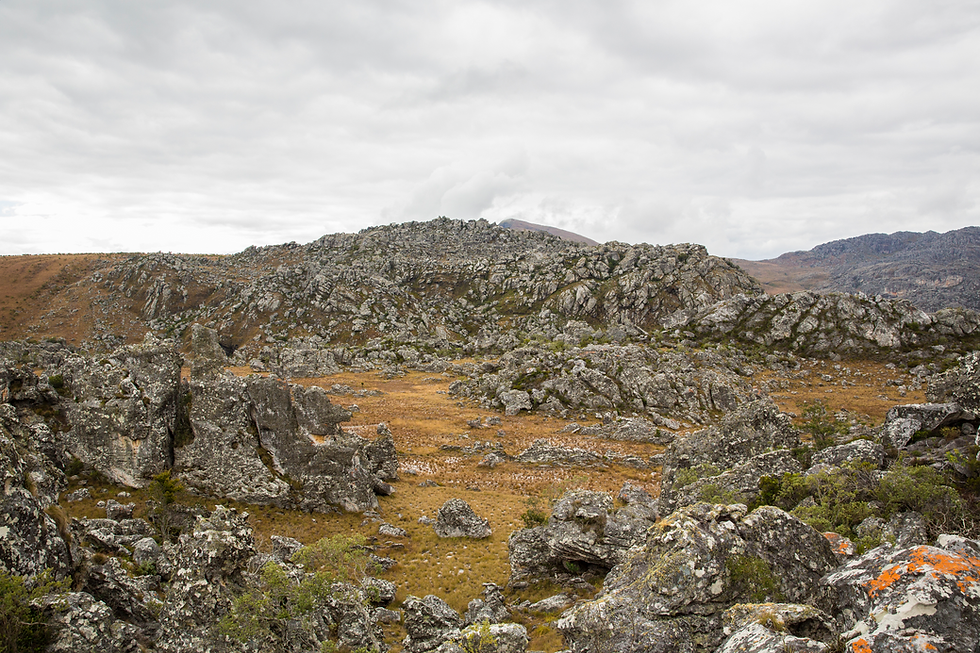
Reflecting on my previous trip to Zimbabwe, I eagerly await our adventure. I'm standing at the Mango Airlines counter in Cape Town, South Africa alongside Paul Robinson and Jimmy Webb, two of the world’s strongest boulderers. We are traveling to Chimanimani National Park for Paul and I to complete the fourth section of our bouldering film, Uncharted Lines. The film stars Paul, Jimmy and Chris Sharma, adventurous and passionate climbers, who desire to establish five-star boulders in new, inspiring destinations.
We land in Bulawayo and our host, Derek, picks us up. Derek is the ringleader of the Zimbabwe climbers, creating topos and running a Zimbabwean climbing Facebook page. He hopes that the attention from Uncharted Lines will inspire more climbers to visit.
We arrive at the grocery store with a list detailing everything needed to survive for eleven days in the mountains. The drive will total nearly eight hours and there are very few shops, restaurants, toilets or gas stations and those that exist are unappealing at best. We have a fixed amount of American dollars, the currency used in Zimbabwe as of 2009, and with the daily bank limit being $100 and most businesses not accepting credit cards, money must be spent sparingly.
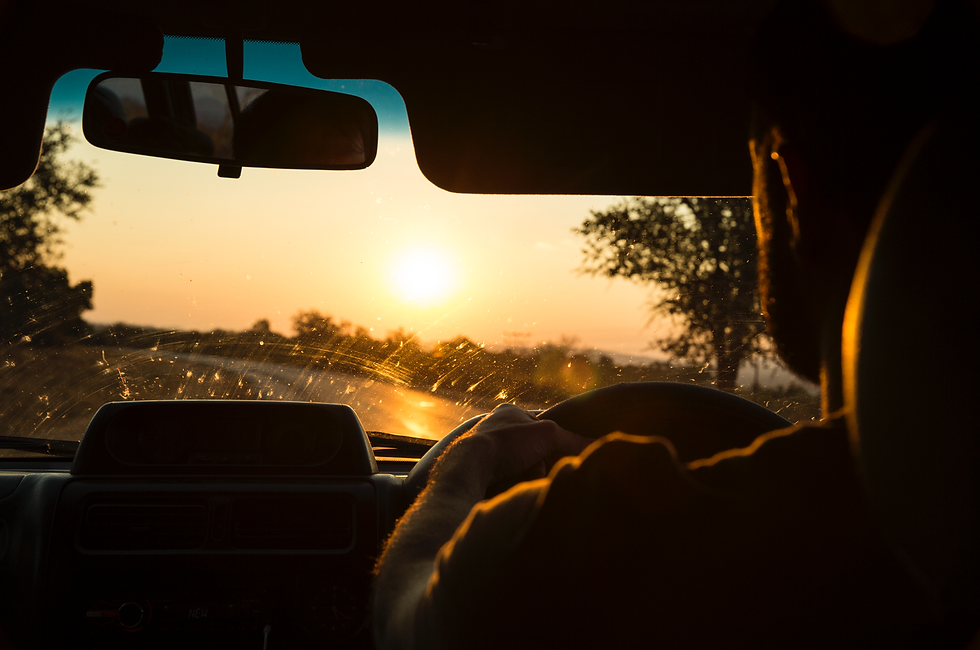
We depart at 5am to make it to Chimanimani in time to meet the Outward Bound porters we prearranged to help us transport our gear to the hut. We pass by the occasional traditional village of mud and straw structures. Trees appear that boast trunks wider than the village huts. As we continue on, massive granite eggs replace the trees, but most of the rock quality is poor. It grows hotter and drier. People and villages become scarce; it is quiet and desolate.
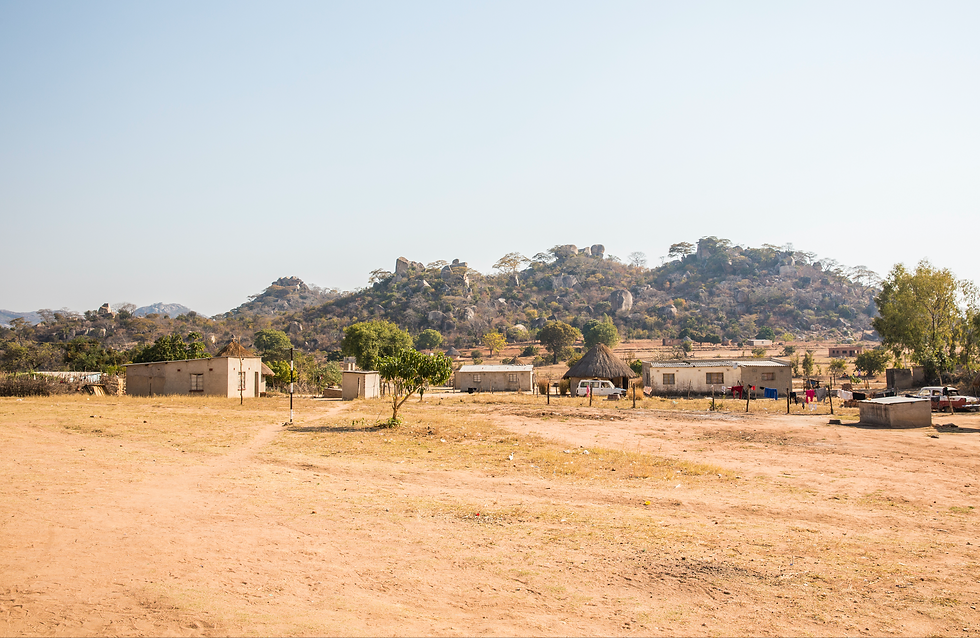
The road steepens and pine tree forests replace the dry shrubs of the desert. As the altitude increases, the temperature drops. Mountains rise up dramatically to reveal lush green forests and silver hued sheer cliffs. The granite has been replaced by endless grey quartzite rock.
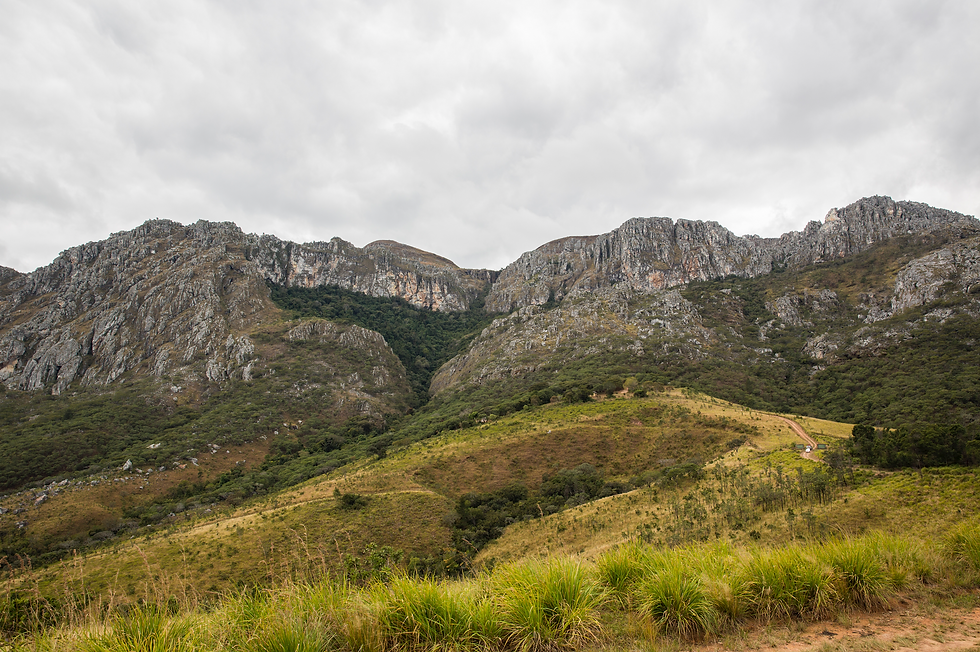
Arriving at the campsite, we check in and pay the required fees. The porters are an expensive addition to the trip, but they as a blessing with the amount of gear we have. The campsite sits at the base of the mountain, but requires a strenuous hike twice a day in order to climb the boulders on the peak. We opt for the hut on the summit to spend less time hiking and more time climbing and exploring, but we must bring everything we have up the mountain at one time.
The two-hour hike initiates with steep stone steps that boast the sought after friction of the best quartzite. We traverse through forests and tall grasses, up narrow ravines and over small boulders. Continuing on, the rock increases in quality, but the small size of the boulders is uninspiring. I remember Chimanimani only reveals her hidden secrets to those who are patient. I summit the final hill and reach a grassy plateau looking out upon the first hint of magic.
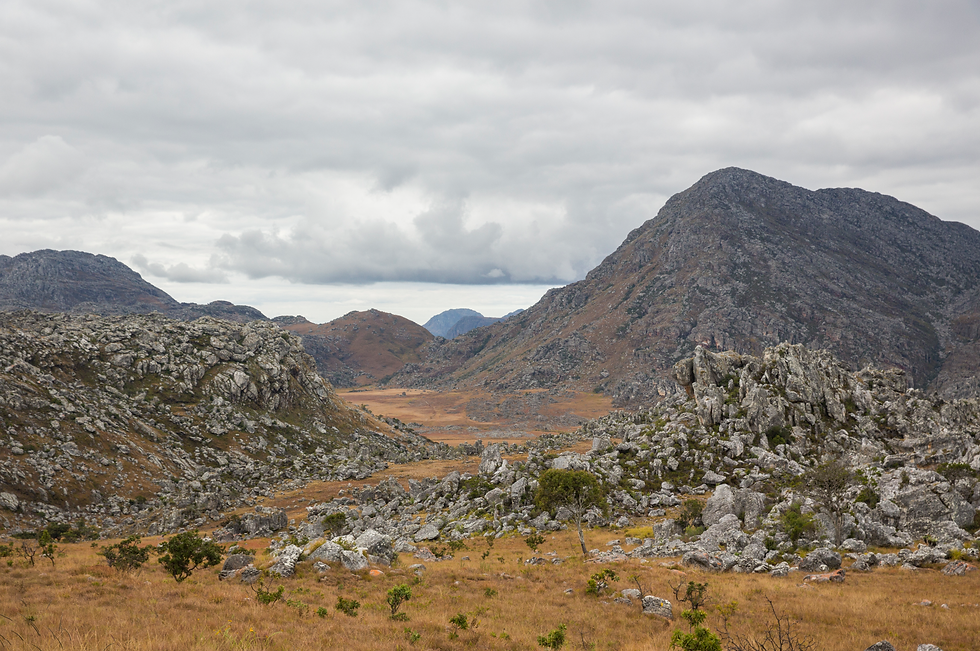
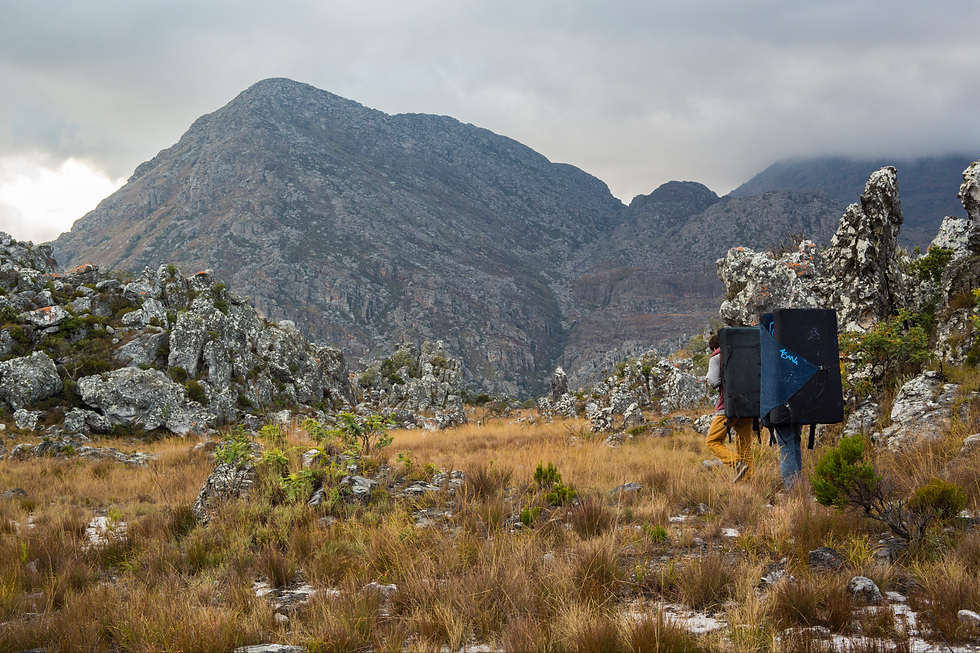
The temperature is cool and the wind whips; this is one of the coldest places in Africa and I'm grateful to have brought many layers of clothing. Despite it being July, it's easy to forget that the seasons are opposite in the Southern Hemisphere. We are here in the middle of their winter and temperatures will average 55F. It's the perfect temperature for hiking and climbing and some of the greatest climbing weather you can find in July in either hemisphere.
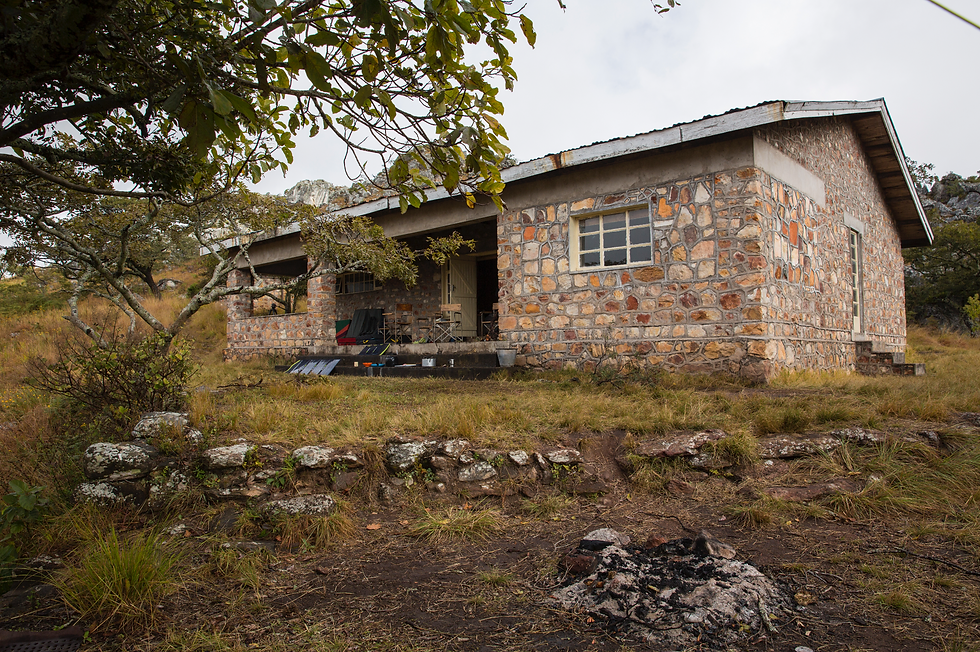
Approaching the hut, I quickly notice that the outhouses have been boarded up. The sink is no longer operational; we will have to collect water from a nearby source. We locate the nearest creek and fill what jugs we have. The hut is as I remember- three large rooms- two for sleeping and the other for cooking and eating. There is no electricity and we will depend on our Goal Zero solar products: generators, lanterns, chargers, and headlamps. From the expansive front deck we have a view of plains, the river below, and the mountains bordering Mozambique in the distance. There is no one around for miles and there is a sense of peace and possibility seldom felt in the western world. Unpacking, we attempt to organize: food, stoves, fuel, dishes, pans, cutlery, sleeping bags, climbing gear, and filming gear. We take comfort in knowing that the village of Chimanimani sells some food items in case we run out.
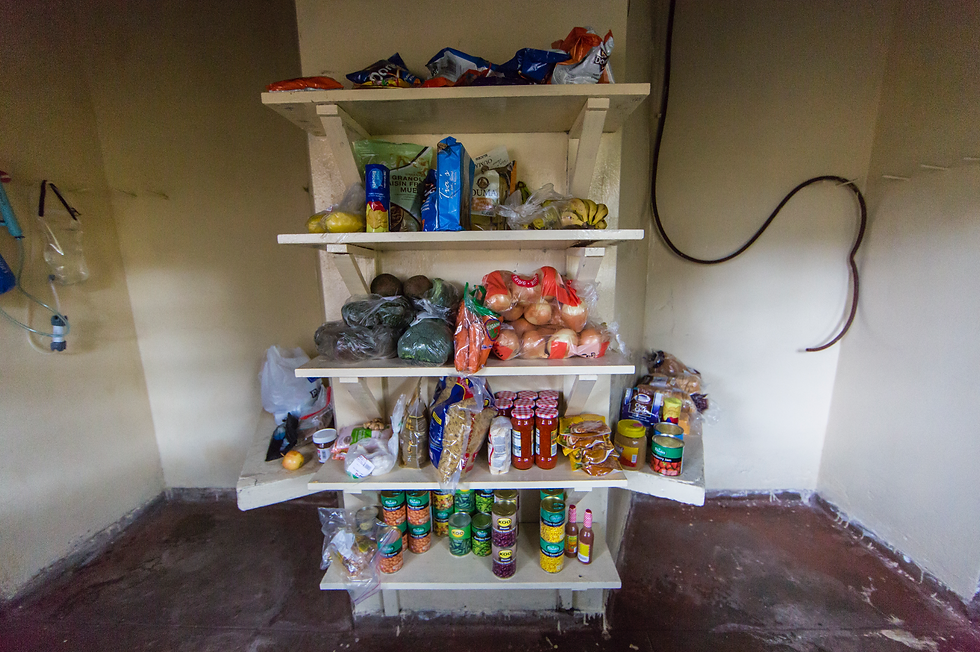
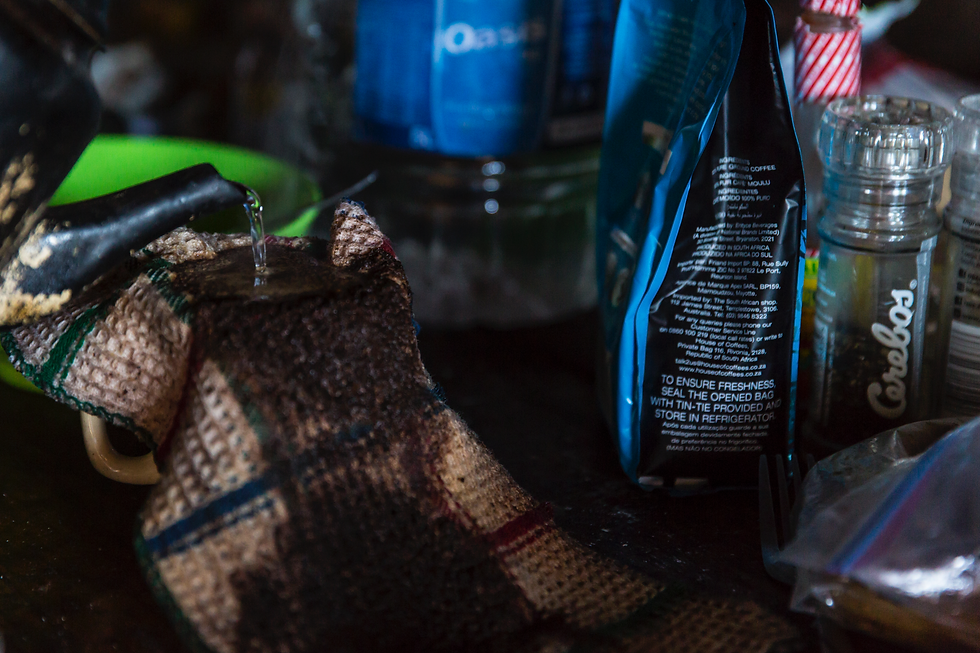
Dinnertime consists of three hot plates, a bunch of non-refrigerated items, river water, a couple pots, and a pan. Using the lantern’s light and a dirty knife, we chop the vegetables on the hut’s tabletop, it appears to have never been cleaned. When dinner is finished, much of the water supply is gone. We have grown accustomed to morning rains as the first round of cleaning and we leave the dishes, utensils and pots outside after dinner in preparation. Sipping tea in front of a small fire, the house slowly fills with smoke due to poor ventilation. Teeth are brushed with the last of the river water and faces are occasionally cleaned with wet wipes. Bedtime comes early; without much light and no entertainment, there is no reason to stay up. Attempting to find comfort on the squishy mattresses provided by the hut, we burrow in our sleeping bags, drifting off to sleep.
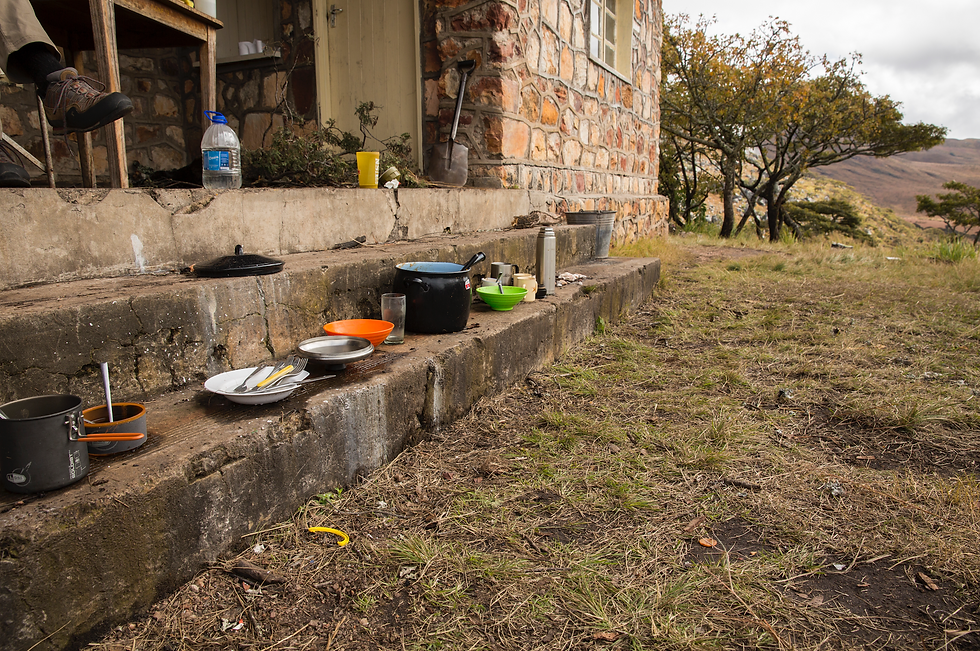
In the morning we head up a nearby steep mountain, huffing and puffing until we reach the summit. The white sand ground flattens to reveal rocks in new exotic forms; they twist and arc, exposing open tunnels through their bottoms and curving horns in their tops. We are now in a boulder field created by Doctor Seuss himself! Jimmy and Paul begin brushing, chalking, and divvying up the best lines they can find, making quick work of a few climbs. The guys separately marvel at the supreme quality of the boulder problems they can now proudly call their own. Paul claims, “This is some of the most bullet hard rock I have ever climbed on," and Jimmy wholeheartedly agrees.

Halfway through the trip, the clouds rise, revealing the sun’s gleaming face and the first hint of warmth thus far. With the unexpected heat, it becomes the one and only bathing day. Without running water, the creek that serves as our drinking water source is also the place for bathing. The water is cold and causes burning headaches. Hunching forward to scrub the shampoo into our hair, we take turns filling a pot and slowly pouring the water over our soapy scalps.
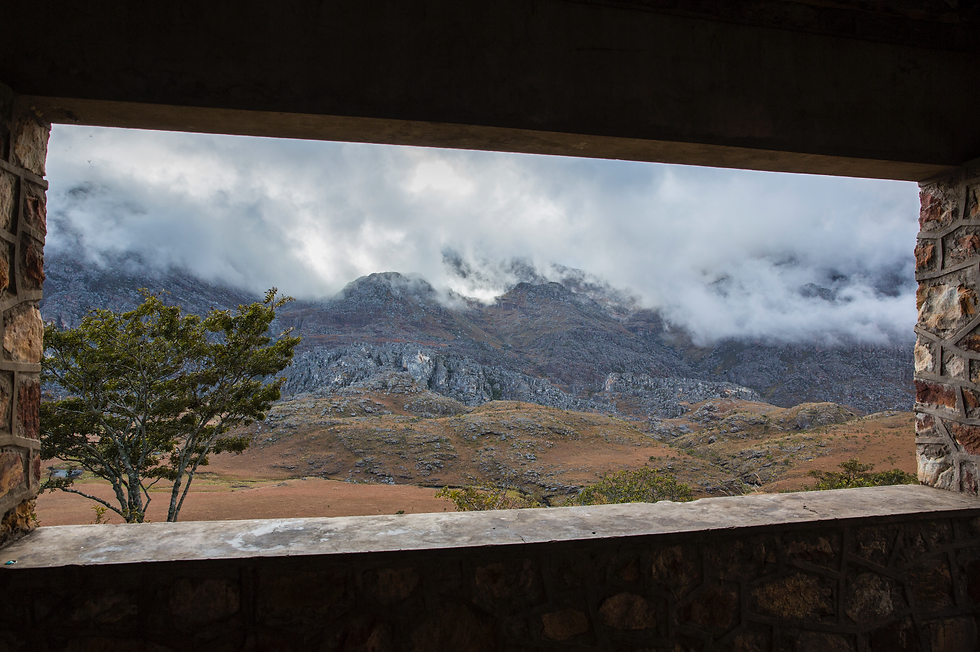

The next day we set out at a brisk pace and I look down just as a small snake slithers quickly by. "Snake," I say casually, thinking nothing of it. As the only female in the group, I had assumed I would have the most fearful reaction to the snake. However, I had remained unfazed as the boys all yelled at me to get back and questioned my judgment. "It's just a small snake," I say. Derek takes a closer look, "it's a puff adder." My stomach tightens as I think of the repercussions. The puff adder is the fastest striking snake and extremely poisonous; the closest anti-venom is at least four hours away. Slightly shaken, the group continues the hike, walking at a slower pace with cautious eyes glued to the ground.
Over dinner Maxwell, the other videographer, turns to Jimmy and asks, "have you guys found anything in the v14/15 range yet?" Jimmy is quick with his response, "Maybe one thing, but to be honest I don't want to spend the time on one hard line when I can put up a ton of 5-star lines of all grades." I think about his response for a while and realize it defines the difference between a climber and a climbing pioneer. To have a passion for climbing is to be inspired by the beauty of the line and the movement of the climbing. In the new generation of climbing, there is a strong focus on grades of boulders over names of boulders. There is an emphasis on stepping up a level once the previous level has been accomplished, rather than climbing a variety of styles and rock types that build skills and ignite inspiration. I wonder what the future holds for climbing pioneers.
The next day we head to a massive freestanding boulder dubbed, "The Jessup Project," for the Jessup grip tape-like texture on the holds. The boulder has multiple lines ripe for the picking, ranging from 15 to 40-foot top outs. Unlike many of the boulders the guys had established, this boulder had no easy way up to fix a line. When trying to put up a first ascent boulder of this difficulty and height, climbers must be on a rope to test the holds for stability and the rock must be properly cleaned and chalked.

After attempting to reach the top of the boulder in a variety of ways, the boys resort to wearing their climbing shoes to make a ground-up ascent of a moderate boulder problem, while trailing static ropes from the harnesses they wear. Both guys get to work sorting through possible beta. The sun has made a surprising visit and beats down hard, making their skin hot and wet; they are unable to give valiant efforts.

As the day progresses, the clouds slowly cover the park in a flat light, providing cooler temperatures and wind. Jimmy is the first to try his climb, and after having previously sorted the beta, is able to make a quick ascent. Next up is the crimp line Paul has prepared, which runs up the tallest part of the rock, ending at approximately 40 feet. It is a no-fall situation and because of the overhanging angle of the wall, he cannot try the upper moves on a rope. Luckily, he is able to try the bottom with a pad beneath him and the moment he sticks the crux from the bottom he guns it for the top.
Jimmy has one final project to complete; it suits his style and he has sorted the beta aside from the first move. Paul comments on the humid conditions and his skin poor skin. “40%. That's how good my skin is out of 100.” Paul says as he walks over to inspect the holds.
“Don't touch my holds with your bad skin!” Jimmy says in a joking way, but we all know he is serious. With friction dependent holds, every detail matters. The hold must be brushed before every attempt and hands touch the rock or other cool surfaces to decrease the temperature of the fingertips. Climbers wait for the shade and the breeze, staying calm and patient. Without good conditions, the climbs are much more difficult, if not impossible. Jimmy rests between goes, conserving every ounce of energy to direct it into the first finicky move. When climbing at this level, patience and creativity are essential virtues. No path has been determined and it is up to the climber who claims the first ascent to figure out the most logical start and route to the top of the boulder while sticking to the chosen line. Finally sorting out the correct method, he finds an easier way and completes the climb.
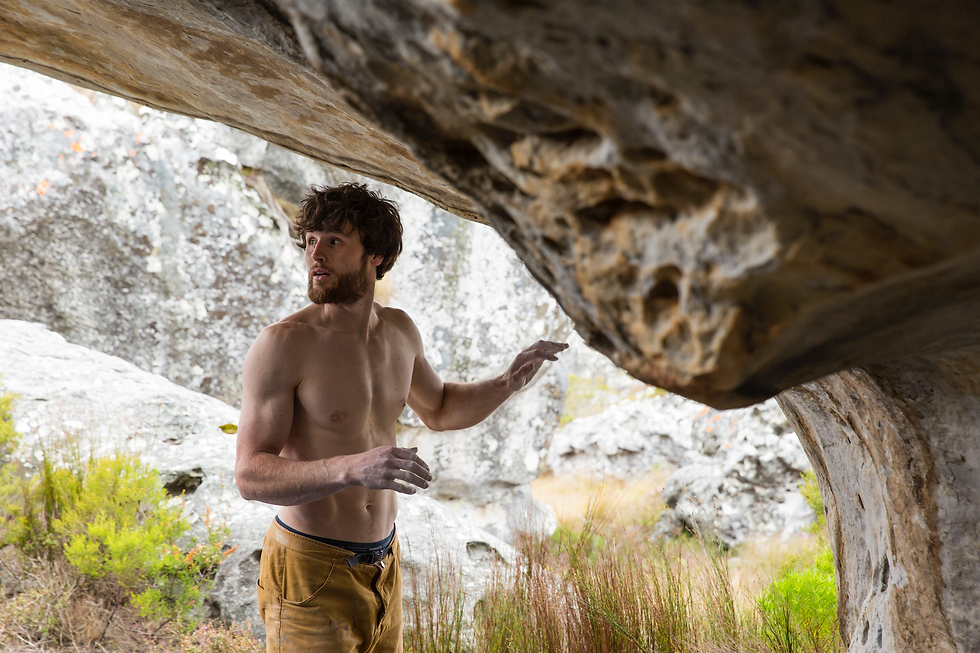

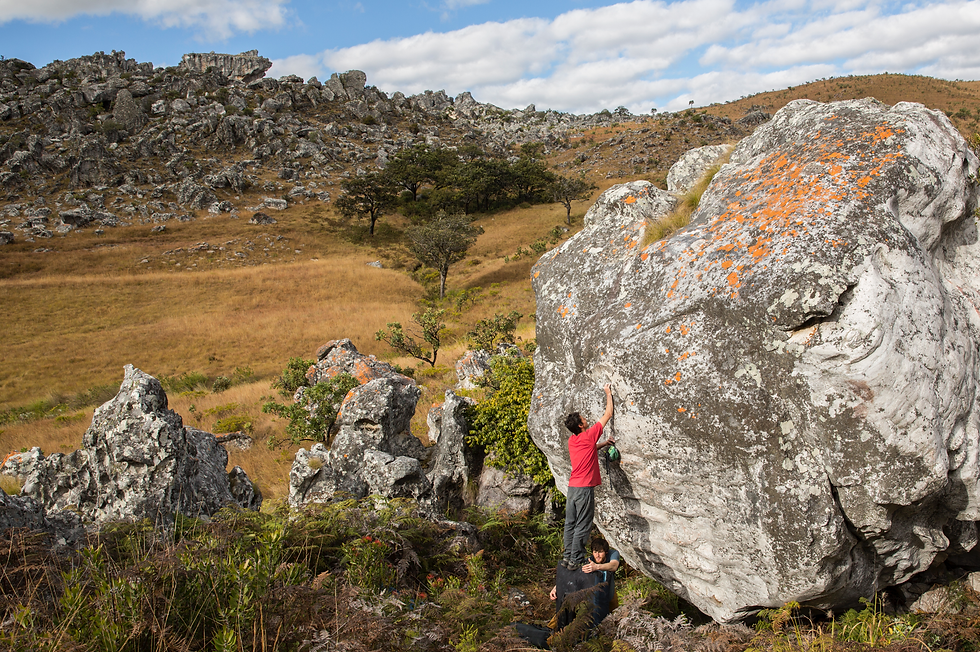
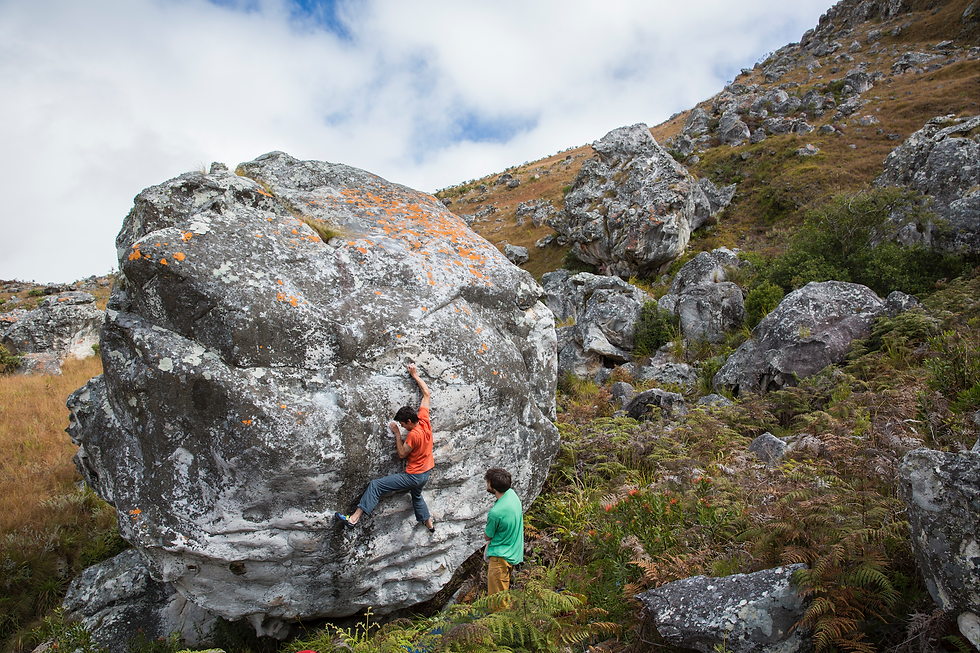
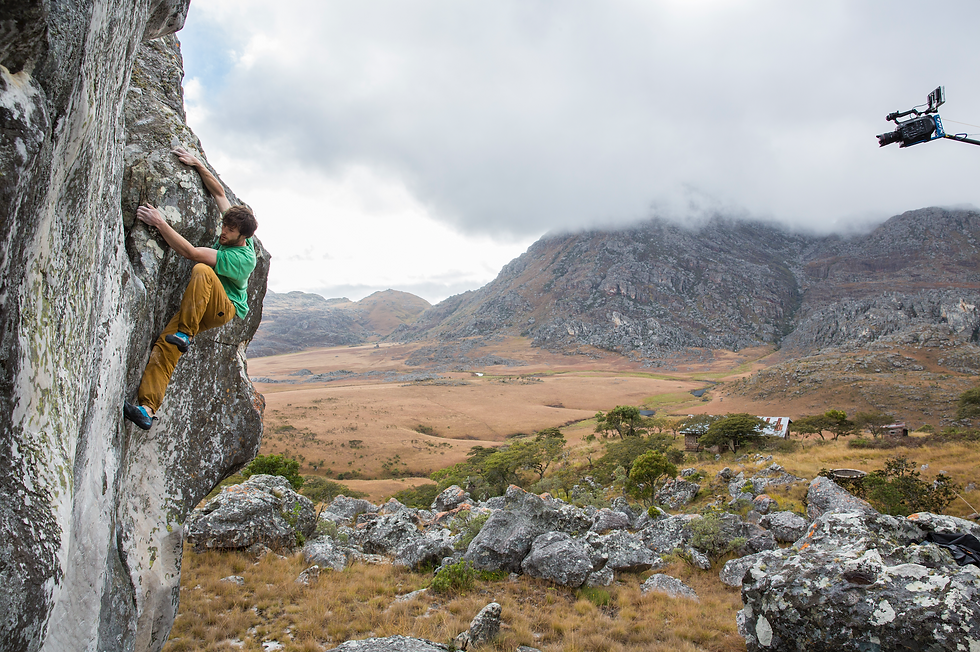
The six porters arriving at 620 AM on the last day function as our wakeup alarm. We leap from our sleeping bags in a mad rush to finish packing and hand over the heavy luggage to the porters. We pick up our packs and begin the hike down the steep mountain. Reaching base camp on wobbling legs, we are exhausted. We are drained from the living conditions, despite feeling blessed to have spent the last 11 days in a pristine, wild and virtually untouched landscape. Adventure climbing is not always easy, but the experience is worth it.